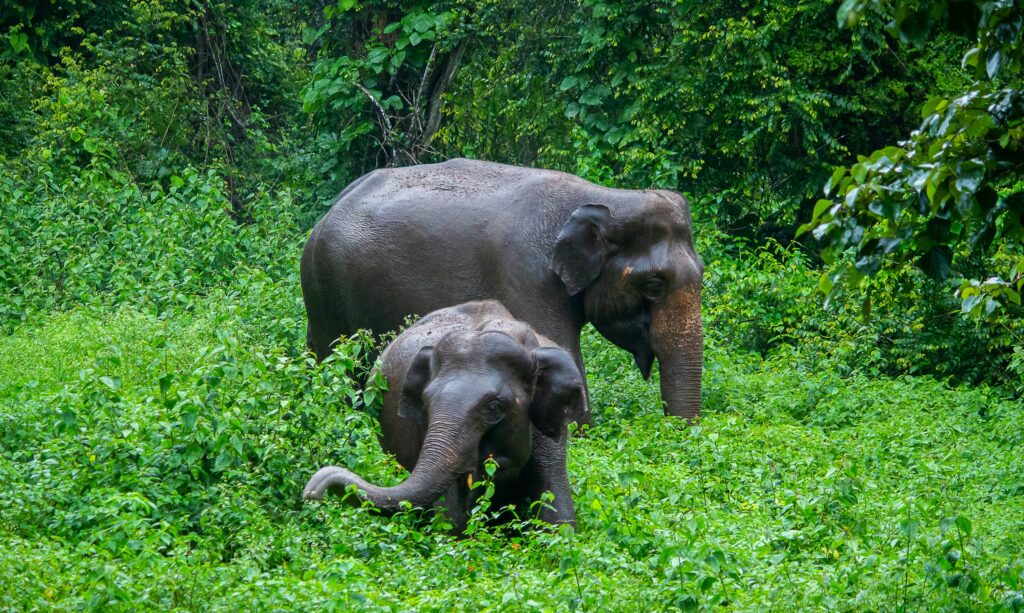The Elephant Foraging Study aims to document the foraging choices of Asian elephants by conducting elephant dung trail transects in Weheragala Corridor.
This ongoing study investigates the forage choices of Asian elephants in human-influenced areas by analyzing dung collected along transects near Weheragala Tank and the corridor. The project aim is to identify which plant species elephants consume and how human land use affects their feeding pattern.

The project supports sustainable human-elephant coexistence strategies by delivering scientific data on elephant dietary behavior in shared landscapes.
The foraging study of elephants near Wasgamuwa analyzed dung samples, revealing that grass species dominate their diet, and were present in over 80% of samples. Panicum maximum was the most frequent grass, especially in the dry season, while rice seeds appeared in 60% of wet season samples, and mung bean seeds were found in over 40% of dry season samples. Traces of banana and cassava indicated occasional feeding on cultivated crops or garden waste. These findings show clear seasonal shifts, with elephants consuming more lush grasses and rice in the wet season, and relying on fiber-rich grasses and dryland crops during the dry season. The presence of crop seeds supports local reports of seasonal crop raiding, particularly near paddy fields during harvest time.
The study offers important ecological insights into elephant dietary flexibility and their role in seed dispersal, including cultivated plants. It helps explain crop-raiding patterns, raising social awareness and tolerance among farming communities. Economically, identifying high-risk crops and seasons can guide farmers and authorities to better protect crops and minimize losses.
For sustainability, plans include expanding dietary analysis to more conflict zones, integrating data with GPS tracking and camera traps to monitor feeding behavior and habitat use. Educational programs will raise awareness to reduce human-elephant conflict. Key lessons emphasize the importance of seasonal data collection and community collaboration for accurate results and successful conservation.
Future engagement opportunities involve partnerships with NGOs for resources, local training on non-invasive monitoring, and involving citizen scientists and students to build local capacity and develop real-time crop-risk maps for conflict mitigation.
We offer individuals and families a rare opportunity to work alongside scientists, conservationists, educators, community partners, and local villagers deep within the heart of beautiful Sri Lanka. Whether you’re traveling alone or with a group, for fun or for business, our programs offer a wide variety of options to meet your needs and fulfill your interests while helping to support our critical conservation and research work.